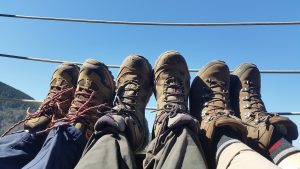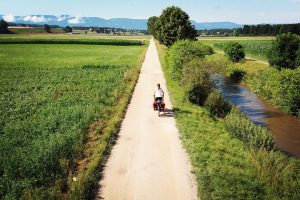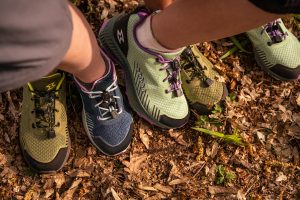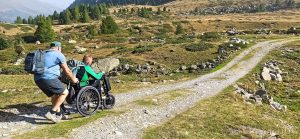Walking is an extraordinary experience, especially along routes rich in history and nature like the Via Francigena, but it is also a challenge for our feet. After long days of walking, the risk of blisters and irritation can compromise the pleasure of the journey. However, there are natural remedies that can help keep your feet healthy, such as sheep’s wool and lanolin, true allies for those who travel long distances. So, let’s find out together with our partner Camminare Comodi what Hikers wool is, how to use it and why it represents a natural and effective solution to protect your feet.
Why blisters form
Blisters are small bubbles filled with liquid that form on the skin due to repeated rubbing. While walking, the continuous movement of the feet inside the shoes can cause this type of irritation. An untreated blister can become very painful and even become infected, so it is essential to know how to prevent and treat it. Choosing shoes and socks is the first step to preventing blisters. Shoes should be slightly larger than the foot to avoid pressure, as feet tend to swell when walking. On the contrary, socks must be well-fitting: by remaining firmly in contact with the skin, they reduce rubbing. It is important to choose technical socks, capable of managing humidity and free of creases that can cause irritation. But one of the oldest solutions to prevent blisters is certainly the use of sheep’s wool. This natural fiber is not only soft and breathable, but also creates a protective cushion that reduces friction between the skin and shoes. Let’s take a closer look at what Hikers wool is.
Hikers wool and its beneficial properties
Hikers wool, also known as raw sheep’s wool, is a real panacea for those who walk for a long time. Extracted from breeds such as Texel and Friesian Milk, this untreated wool retains all its natural properties, offering exceptional comfort. In addition to preventing irritation and blisters, it creates a protective barrier that keeps the skin hydrated thanks to lanolin, its precious natural ingredient. It absorbs excess moisture, keeping the feet dry and protected, thus becoming an important ally that many pilgrims are discovering.
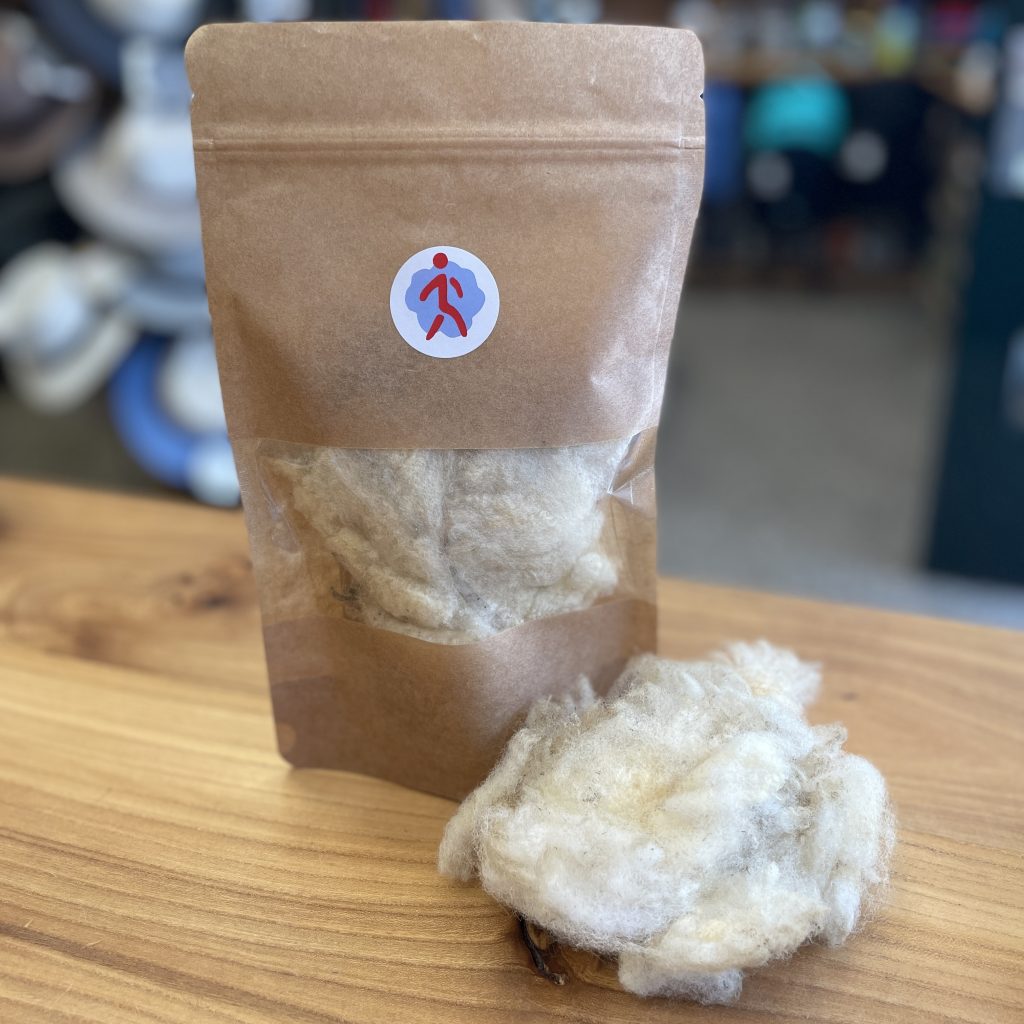
Why use Hikers wool while walking
During a long walk like the Via Francigena, the feet are subject to constant stress: continuous contact with the shoes and the ground, sweat and the climate can cause rubbing and irritation. This is where Hikers wool comes into play, which, positioned between the sock and the skin, creates a natural protection against abrasions. Using Hikers wool while walking can make the difference in crucial moments, especially on the most challenging sections. This material not only helps prevent the formation of blisters, but also manages existing ones, keeping the skin hydrated thanks to lanolin and offering immediate comfort. Furthermore, being light and easily transportable, it represents a practical addition to every pilgrim’s kit.
Sheep’s wool and blister prevention: the secret is lanolin
The true strength of sheep’s wool lies in lanolin, a fatty substance naturally produced by the sebaceous glands of sheep. This fat has a protective function on the skin of animals, creating a sort of waterproof film that soaks into the wool fibers. When we apply sheep’s wool in contact with our skin, lanolin gradually releases its benefits, offering hydrating, soothing and protective properties. Not all sheep produce the same amount of lanolin. Camminare Comodi carefully selects breeds such as Texel and Friesian, known for the abundant production of this precious substance, compared to breeds such as Merino. The higher the concentration of lanolin in the wool, the greater the benefits for our skin. In fact, lanolin has numerous qualities that make it particularly useful for those who walk for a long time:
- Moisturizing: one of its main characteristics is the ability to retain water. This property makes lanolin an extraordinary moisturizer, capable of keeping the skin soft and hydrated even after hours of walking.
- Soothing: thanks to the high content of fatty acids and fatty alcohols, it has a soothing and anti-inflammatory effect, ideal for calming irritation and preventing redness.
- Protective: applied directly to the skin, it creates a natural barrier that protects against external aggressions, such as the constant rubbing of shoes, thus reducing the risk of blisters and abrasions. The use of wool rich in lanolin, therefore, not only prevents the discomfort of walking no, but it actively contributes to skin care, keeping it elastic and healthy along the entire route.
Other properties of sheep’s wool
In addition to the benefits of lanolin, sheep’s wool offers numerous other qualities that make it ideal for taking care of your feet while walking:
- Breathable: thanks to its ability to absorb moisture through a capillary system, wool can retain up to a third of its weight in water, while allowing good air circulation and keeping your feet dry.
- Insulating: wool is an excellent thermal insulator. Its hollow fibers trap air, helping to keep your feet warm during the cold months and cool during the summer.
- Antibacterial: by promoting a constant flow of air, wool combats the growth of bacteria, helping to keep your feet cleaner and healthier.
- Hypoallergenic: keratin, the protein that wool fiber is made of, is hypoallergenic, making it suitable even for those with sensitive or irritated skin.
- Soft and fluffy: Its pleasant and delicate texture makes it perfect for use directly on the skin, providing comfort while walking.
- Biodegradable: As a natural and renewable material, wool is completely biodegradable, making it an eco-friendly alternative to common blister care products.
- Lightweight: Extremely lightweight, it is easy to carry without adding weight to your travel or first aid kit.
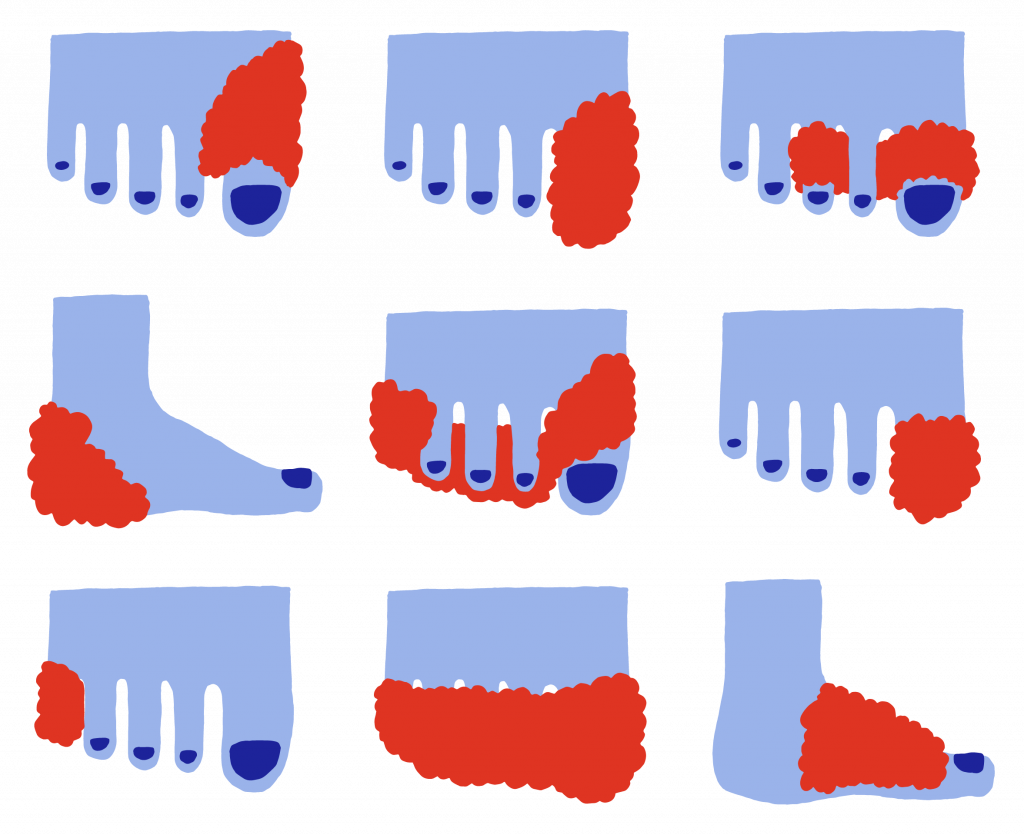
How to use Hikers wool
To prevent and relieve blisters while walking, sheep’s wool should be applied directly to the sensitive areas of the foot. Here’s how you can use it:
- Prevention: Place a tuft of wool between the sock and the skin in areas prone to friction (for example, heels or toes). The wool will act as a cushion, reducing friction.
- Treatment: If a blister is already present, gently place the wool around the affected area to relieve direct contact with the shoe and promote healing.
- Change frequently: Change the wool every day or when it becomes too compressed or wet, to keep the skin dry and protected.
Sheep’s wool adapts easily to different parts of the foot, protecting it from irritation.
From the image you can see some of the ways in which you can place it:
Under the heel or the sole: to cushion pressure when walking
Around the toes: to prevent rubbing between them
On the sides of the foot: to reduce lateral friction in shoes
Spread the wool where you feel discomfort, creating a soft layer that reduces the risk of blisters.
What are the benefits of using sheep’s wool
Sheep’s wool is a great natural alternative to traditional anti-blister plasters. Unlike adhesive dressings, which can stick to the skin and cause further damage when removed, sheep’s wool is gentle and does not traumatize the skin.









